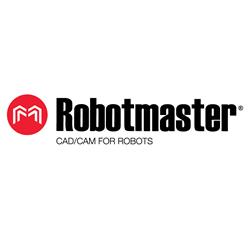We leveraged our long heritage and leadership in robotics to create an AI software product that helps our customers overcome the challenges of traditional automation, accelerate set-up and deployment, and achieve greater ROI from their existing automation systems.
Addressing Challenges in Software Solutions for Robots and Physical AI
Q&A with Kristi Martindale, Chief Commercial Officer | Palladyne AI
Tell us about yourself and your role with Palladyne AI.
I have more than 25 years of experience working for technology companies and have served as Palladyne AI’s Chief Commercial Officer for the past year. Prior to that, I served in executive leadership roles with the previous version of the company which focused on robotic hardware development, Sarcos Technology and Robotics Corporation. In my current role as CCO, I drive commercialization efforts, go-to-market strategy, and revenue growth initiatives.
Tell us more about the transition from the previous iteration of the company—Sarcos Robotics, which produced really breakthrough hardware technology, including its full-body, fully powered exoskeleton—to becoming Palladyne AI.
For nearly three decades, Sarcos had been focused on developing advanced robotic hardware systems. Our software product, which we began to develop in 2018, was originally intended to be used along with the hardware we were developing. We made incredible progress quickly on the software and, along the way, determined the incredible value it could provide beyond our hardware to the deployment of autonomous robotic systems more broadly. By design, the software is hardware agnostic, making it a viable solution to a wide range of commercially available robots. As a result, in early 2024, we decided to pivot the company and focus on our software while putting our hardware efforts on hold. At that time, we renamed the company to Palladyne AI.
We leveraged our long heritage and leadership in robotics to create an AI software product that helps our customers overcome the challenges of traditional automation, accelerate set-up and deployment, and achieve greater ROI from their existing automation systems.
Robotic automation is a significant challenge for companies across many industries. What do you see as the market opportunity for software solutions for robots and physical AI?
There is a huge market opportunity for AI that can help automate processes in the physical world, or “physical AI.” This is particularly true for automating robots both in the factory and the field. By adding Palladyne IQ to industrial robots and/or cobots, companies are now able to automate tasks and processes that historically have been too variable or complex to be automated. A company can use traditional robots combined with our low-code/no-code AI software product to quickly enable the robots to autonomously perform complex tasks and to become more adaptive to variability and real-time change. This applies to a variety of industries with automation challenges and addresses use cases in manufacturing; heavy material handling; kitting and parts sequencing; surface preparation; and quality control inspection.
Can you elaborate on “physical AI?” Why is it different from the digital AI most of us are already familiar with today? And why this is such a significant development in robotics automation?
“Physical AI” is the application of artificial intelligence to things in the physical world—particularly the automation of robots and unmanned aircraft systems (UAS)—to improve performance and output. This contrasts with digital AI, which uses internet-based information to provide humans with insights and information that would be virtually impossible for humans to develop at the same speed on their own.
Palladyne AI’s software product applies physical AI to enable robots to observe, learn, reason, and act in a way similar to human behavior. Our AI is being applied to robotics to manipulate real objects in the real world. We use an edge-based, closed-loop approach to automation that provides the brains and adaptability for robots to address the many types of variable tasks that would otherwise be extremely difficult to automate.
Can you share a use case of how your software was implemented to solve a difficult robotic automation scenario?
Our AI software product was designed to help organizations overcome key challenges of traditional automation, accelerate setup and deployment, and achieve greater ROI from existing, under-utilized automation systems. This can help bridge the automation gap and unlock new frontiers for robotic performance.
It turns out there is broad applicability in many industries with a variety of use cases. Several of our partners and customers have been faced with automation challenges involving their traditional factory robots, particularly when the task or environment is subject to variability that would typically require a human’s intellect to complete. Our software allows a human to teach a robot to perform a task, consider the variability in that task, and does so without requiring massive datasets or cloud computing—everything is done at the edge. For example, we can help automate many types of manufacturing tasks that have inherent variability in the types of equipment or parts being used and in how the tasks themselves get accomplished.
Tell us about your software products, Palladyne™ IQ and Palladyne™ Pilot, and how they are differentiated from other AI software solutions.
Palladyne™ IQ helps transform traditional industrial robots and cobots into powerful, flexible robots, enabling autonomy that provides the ability to adapt and complete variable and complex tasks in arbitrary environments. The product allows simple no-code robot task training and enhances agility and the ability to accommodate variability, task complexity, and changing work environments. Palladyne IQ leverages AI to enable human-like reasoning capabilities. It is commercially available now and applicable to a wide range of industries facing automation challenges, including automotive, aerospace & defense, diverse manufacturing, construction, remanufacturing, and energy.
Our Palladyne™ Pilot AI software product is designed specifically for drones and mobile products. It uses reinforcement learning, game theory, and sensor fusion to enable tracking and collaboration across multiple platforms simultaneously. This dramatically improves situational awareness and helps them successfully accomplish their mission. We have announced multiple collaborations within the defense sector, including with the U.S. Air Force and the UAV company Red Cat, pertaining to our Pilot product.
How do you see the robotics and AI industries evolving over the next five years?
I believe we will see the continued maturation and deployment of Physical AI—technologies designed for robots that enable them to effectively work in complex, unstructured, and arbitrary environments. In addition, more industries and companies will benefit from equitable and affordable access to low-code / no-code AI solutions, reducing the need for highly skilled programmers and delivering automation that is simple to deploy and manage regardless of organizational scale or capability. This will drive an acceleration in automation with more affordable, efficient, and accurate execution of complex tasks by robotic systems.

Kristi Martindale has served as Palladyne AI’s Chief Commercial Officer since March 2024. In this role she drives commercial aspects of the Company’s operations with responsibility for commercial strategy and operations leading go-to-market, product planning, marketing, and public relations.
A 25-year veteran of the technology industry and a brand-builder, Kristi’s passion is developing performance-driven global organizations and creating new markets. She has designed, developed, and deployed successful industry-leading products and strategies for startups, mid-sized, and Fortune 100 companies.
Kristi previously served as an advisor to Magic Leap and on the Board of Directors for the nonprofit Walden Family Services. She is a frequent speaker at industry conferences and events and is the recipient of a Stevie Award for Women in Business Female Executive of the Year.
Kristi holds a Bachelor of Science in Business Administration and Management from the University of La Verne.
The content & opinions in this article are the author’s and do not necessarily represent the views of RoboticsTomorrow
Comments (0)
This post does not have any comments. Be the first to leave a comment below.
Featured Product

